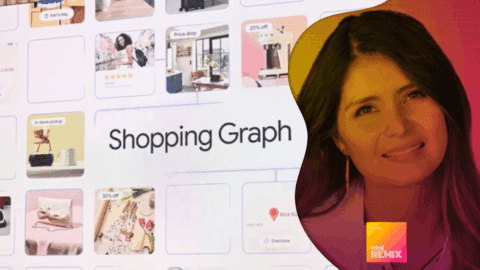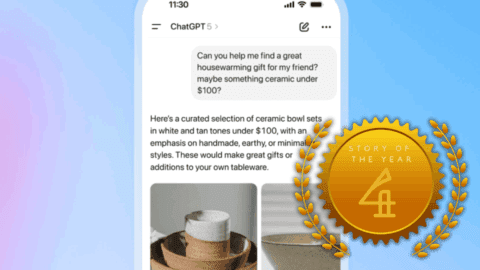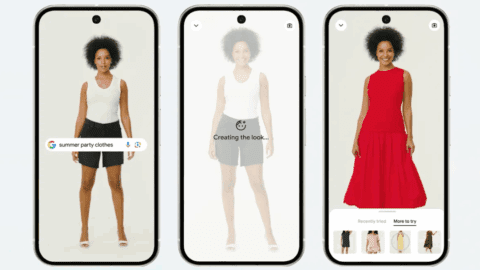As Google and Amazon battle for status as the Number One consumer search site, retailers competing head-on with Amazon are optimizing online reach and return with image-based Product Listing Ads (PLAs), as featured by Google Shopping.
Today up to 35% of searches entered on the Google site will display PLAs, according to the July 2013 Google Company Update from Jefferies Equity Research. At the same time, image ads are pushing text ads further down in search results. Nearly 12,000 advertisers are using PLAs, the Jeffries report indicated, signifying rapid adoption from a wide variety of retailers.
Automated Google search analytics and optimization solutions, such as BuyerPath for Product Ads from Adlucent, can help retailers maximize text and PLA search results by integrating feed and query management, bid optimization, analytics and other mechanisms. BuyerPath, now available in a new SaaS version, can leverage the most significant combinations of data to ensure relevancy and improve e-Commerce profitability.
Improving Month-Over-Month Revenue
Wasserstrom began using PLAs after to help drive B2C sales, said Dale Edman, VP of e-Commerce for the restaurant supplies retailer. “We’ve historically sold to chains, but a few years ago we saw an opportunity to provide our products directly to consumers. We started participating in Google Shopping while it was still free. We were worried about the effort required to manage such a program when it became a paid offering. With 80,000 products and 1,000 brands, it’s not an easy project. By utilizing the Adlucent solution BuyerPath for Product Ads, we were able to increase our month-over-month revenue for PLAs by 125%. We did this by setting up 200,000 intent-based targets, optimizing bids on a daily basis, keeping the feed updated, and using over 1,000 negatives to control targets.”
Edman — who says his team “believes very strongly in the value of PLAs” — shared three key areas in which the strategy contributes to e-Commerce success at Wasserstrom:
- With PLAs, it is critical that retailers show the right ad to the right person. Wasserstrom works with Adlucent to analyze consumer intent to ensure the right product is displayed, resulting in higher conversions.
- The content in a PLA, such as a promotion, text and/or price, supports the consumer intent of a specific search, reduces clicks and increases window-shopping within Wasserstrom results.
- The Adlucent platform helps generate the highest number of queries that will deliver both a text ad and PLA. “When a text ad shows up along with a PLA, consumers have greater exposure to our brand,” Edman reported. “There is also a greater opportunity for conversion, and that’s what we’ve seen.”
Need Supply Co. also saw success with third-party PLA optimization tools: The apparel retailer reported a month-over-month revenue increase of 213%, a return on ad spend (ROAS) increase of 183%, and a conversion rate boost of 105%, said Michael Griffin, CEO of Adlucent. Need Supply Co. achieved these results “through improved bid management efficiency, and by increasing ad relevance to reach more targeted audiences based on consumer search intent.”
Identifying Consumer Intent
Since retailers pay Google every time a consumer clicks on a product, “it makes good advertising sense to increase the value of every click,” said Griffin. Through a combination of marketing technology and analytics that evaluate shoppers’ interests, needs and preferences, the Adlucent platform automatically determines consumer search intent then displays the most appropriate product, price and photo. “We follow a 62-step feed evaluation process that systemically finds opportunities for improving ad relevance. In essence, we are returning control to the retailer in terms of how searches are matched to intent and results.”
Need Supply Co. leveraged an intent-based foundation, Griffin explained, with more than 3,000 new intent-based targets created at the category, subcategory, product line, model and SKU levels. By better understanding intent, the Adlucent platform could shift traffic to the right products, starting with top site sellers, exclusive items and new merchandise. Top text ad queries were then included in titles and descriptions to further optimize feeds for consumer intent.
How does Google feel about search optimization solutions such as Adlucent? “They love it!” Griffin stated. “Google wants to make the search results process as easy and effective as possible for retailers. It’s a win-win-win for consumers, advertisers as well as for Google, whose more meaningful search results help the company grow as the search engine of choice.”
Griffin predicts that Google will make it increasingly easier for consumers to buy directly from Google Shopping through a “buy” option to be featured with search results. “Frankly, I’m not sure if this is good or bad for retailers: A direct buy circumvents the brand experience and engagement that occurs when consumers visit an e-Commerce site, but the strategy can improve conversion rates. It may work well for some merchants and not for others, but either way, it will be a real game changer for the retail industry.”












